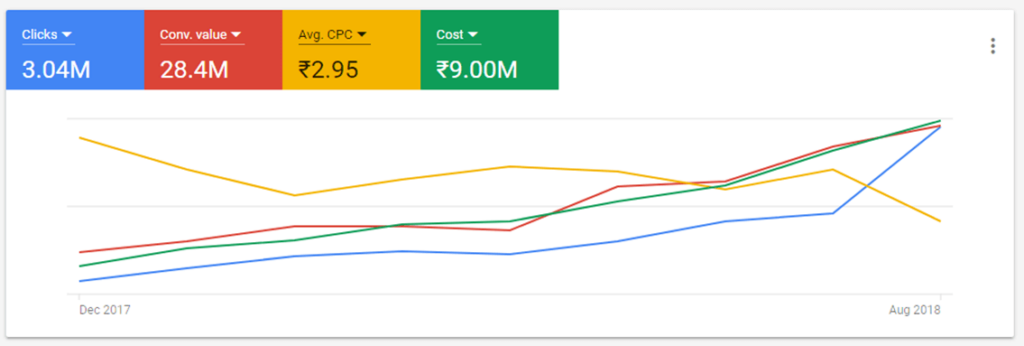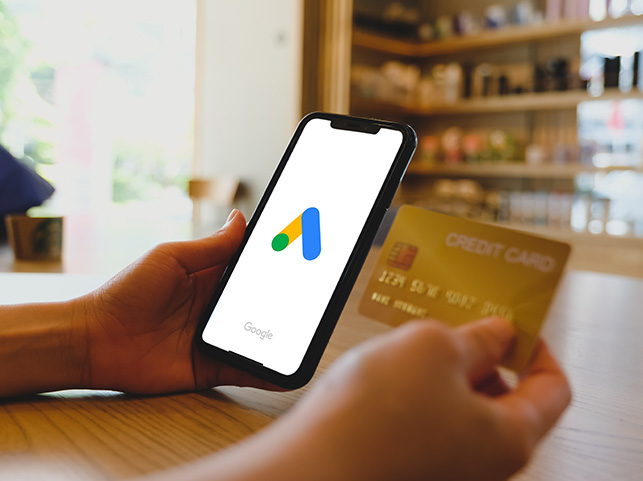Industry/ Service:
Lifestyle Ecommerce Player
A leading online store in India was looking to expand its revenue base. The platform offers 5000+ Lifestyle products targeting senior citizens. The online store was missing revenue targets and losing market share due to poor visibility. As a result, the marketing team was asked to dramatically increase their revenue and profitability.
The Challenge:
The biggest challenge for the online retailer’s marketing team was to expand the sales of its existing catalogue beyond the one product category that was generating 70% of all online sales. The existing website architecture had limitations when it came to integrating with marketing platforms. This hindered the deployment and visibility of more than 50% of products on Google and called for a lot of manual intervention for listing and managing 5000+ product-specific campaigns.
Also, their heavy dependency on Organic search programs to drive sales without exploring a more multichannel approach was another critical limiting factor, eroding gross margins.
In addition, given their multi-category catalog and the nature of the products offered, they face high competition from established e-commerce players such as Amazon, Flipkart, etc. Deep discounting and other standard practices of large e-Commerce stores were another area that created a bottleneck for the marketplace to compete effectively.
Our Approach
We needed to build trust for a client who had burnt their fingers with poor ROI from a paid search program implemented before our engagement and encourage them to deploy a multi-channel marketing program. We also needed to have an extremely tight grip on our strategy implementation to drive the desired revenue targets and ROI.
Step 1: Our detailed analysis covering CRM web and campaign data analysis helped us identify key gaps opportunities for:
- Campaign optimization: We looked at the historical data and optimized every campaign by geographies, day, time, and device to reduce unnecessary spending. At the same time, we adopted new strategies and various tools like ‘Smart Shopping’ from Google to help increase revenue.
- Audience Identification and consumer profiling: For a portal that sells lifestyle improvement products to senior citizens in India, where internet and digital adaptation is still significantly low, it became necessary to understand the difference between the buyer and the consumer of the products. We used the Lookers vs. the Bookers approach and bucketed the audience into buyers (The Bookers) (30-45 years old) and consumers (The Lookers) (45-65 years old).
- Developed product groupings for shopping campaign: Our analysis of past performance buying patterns and competition helped us identify several products that can be grouped together and sold as a bundle for one price. This strategy was to encourage customers to buy more products that are related and used together. This was aimed at increasing the average order value during a single purchase and hence profits and sales of individual items over time.
Step 2: We proposed an omnichannel strategy to expand product visibility and reach within TA (target audience), optimizing key metrics (such as sales) by creating seamless shopping experiences across all channels. Omnichannel strategies consider all retailing activities involved in successfully and simultaneously selling through different channels.
- Channel expansion:
- Smart use of shopping campaigns
- Innovative techniques like using differentiated terms in ad messaging, intelligent product grouping, and a heavy focus on re-optimization ensured that the entire high margin product catalog, gets maximum exposure. In addition, the ROI-focused approach ensured that the campaign remained a consistent performer.
- Product-Specific Display campaigns
- First, we focused on the customer experience. We used data to create personalized, responsive interactions, and launched display advertising campaigns targeting niche interest, in-market, and demographic data across video and apps.
- Leveraging Standard & Dynamic Remarketing campaigns
- We created multiple remarketing lists from website cookie sessions and deployed a system where almost all users are shown contextual and relevant ads.
- Smart use of shopping campaigns
Step 3: Improving ROI and Revenue
- Expanded Product portfolio under promotion: Instead of focusing on limited categories of product form promotion, we grew with a focus on the fast-moving product categories and high-margin products. With constant keyword research and strong ad messaging, RankUno built up ~90% of impression share for the client’s top-performing product categories. Curating keyword ideas from other e-Commerce marketplaces also helped us remain on top of the game. In addition, our channel expansion strategy enabled us to develop multi-touch buyers’ journeys and laid the basis for repeat purchases.
- Constant Keyword Demand Analysis: Frequent analysis and reporting ensured that the campaign was optimized constantly. The team ensured that the campaign did not run in auto mode ever. Constantly studying search patterns, learning, and improvising ensured that the campaign remained optimal throughout the entire duration.
Impact
- Successfully established SEM as an effective channel for revenue generation. Its share increased from negligible to 18% of the monthly revenue.
- Revenue by numbers from SEM increased by 4X (INR 14 L per month to INR 68 L per month) within nine months.
- The in-depth analysis of the buying patterns helped us improve the conversion rate by 45%.
- We have consistently maintained an ROAS of 3.5 to 4 against a minimum expected ROAS of 2.5









